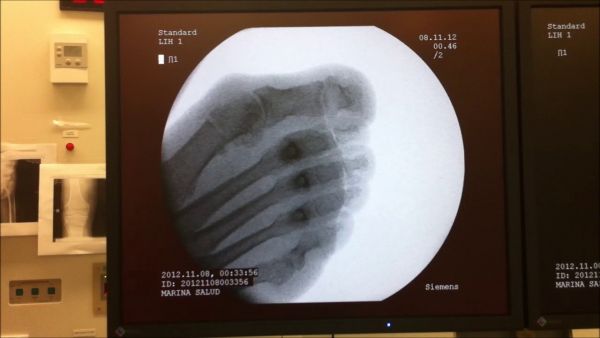BUNION SURGICAL TREATMENT WITH MINIMAL INVASIVE TECHNIQUES
Percutaneous surgery of the Hallux Valgus, best known as bunion, is one of the most important surgical advances. It shatters the myth of being an extremely painful surgery and with long recovery.
The surgery known as MIS (Minimal Invasive surgery) or as percutaneous surgery, allow us to work on the damaged area making a small incision (less than 8-10 mm). Consequently, the trauma of near tissues is minimal. It also requires of radiological visualisation during the surgery, in order to bring into focus the surgical gestures to carry through.
Percutaneous surgery is pointed out to correct foot deformities. There is a exception of cases in which the condition of the metatarsophalangeal joint of the big toe has signs of arthrosis. Therefore its function would be non-viable, then we will choose open surgery techniques.
The great advantage of this type of surgeries is the use of local anesthesia only for toes or the use of ankle blockage. This blockage will allow the patients to traipse promptly and a more extended and effective pain control rather than other techniques.
After surgery the patient will use a corrective bandage to keep the bone alignment thanks to the osteotomies. In addition he/she will use trainer model onwards with rigid sole so they would be able to begin to walk immediately without hospitalization.
This bandage will be removed after 10-15 days. It will be replaced by orthopaedic devices which we have to keep during a month and a half more or less.
These interventions are also used with other pathologies related to them, such as hammertoe, hammer finger, Freiberg disease, metatarsalgia, tailor's bunion, callis on the sole of the foot, plantar fasciitis , plantar spur.
Percutaneous surgery is not a minor surgery, for this reason it is essential that the intervention would be carried out by specialised surgeons. For this reason serious alterations wil be avoided (morphology, function and biomechanics of the forefoot).







